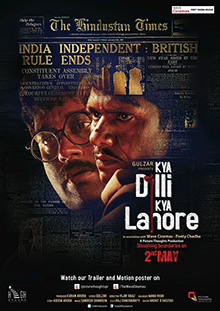
The Winner's Curse is a political thriller about national ID numbers, power and greed. It narrates the story of how a group of IITians use their knowledge and networking to create a governance technology based on national ID numbers and how greed for power leads to their doom.
The
story seemed quite interesting and topical. If you have been
following current news for the last two-three years, you will be able
to link and identify situations and people. UIDAI (Unique
Identification Authority of India) was launched in India with such
fanfare in Feb-2009 and most of us have already obtained an AADHAAR
card. The book also touches on the sensitive and controversial topic
of governments spying on its citizens; something that Edward Snowden
exposed quite shockingly to the entire world in Jun-2013. Also, the
book's characters be it businessmen or politicians are easily
identifiable as they seem to be inspired by real-life people.
The book's story moves across New Delhi, Haryana, Dubai, Bangalore, Dharwar and San Jose. It has an equal mix of businessmen (telecom moguls Harsh Mittal & Rajan Khosla), politicians (the Master), Govt. officials (Raghav Badhwar & Aravind Pandey) and activists (Kamal Pandey). There's also the Master's son-in-law Robbie who seems quite similar to a certain famous son-in-law quite in the news these days. Kamal Pandey's middle-class, activist image seems to be inspired by another 'Aam Aadmi'. Savita Bhambi, the influential PR person, reminds us of another PR lady who was in the news quite sometime back.
Though the book's primary plot is setting up a national identity number system and using that to set up a secret surveillance system, the plot does not begin to unravel till almost half the book is over. Also, the author has tried to include too many sub-plots as part of the book; this leads to there being too many characters spread across multiple locations. It tends to get quite confusing at times.
In addition to the primary plot, there is a civil activist who is trying to expose the business-political nexus; there is a mining scam in the state of Karnataka and there is an IIT JEE preparation coaching class.
All the central characters have studied at IIT – the country's premier educational institution. However, each person chooses his/her separate path towards achieving their goals – be it power, money, status or serving the people.
The pace of the book is quite fast befitting a thriller. However, since there are multiple characters, I had to go back and forth several times. Also, the intimate scenes/hints at them seem to have been inserted merely from the point of selling the book; they do not seem to have any connection with the story whatsoever.
I am going with 3/5 for this book for the way in which a topical story is narrated linking together disparate items. I only wish the author had restricted the sub-plots. Also, the editing is very bad; words and entire paragraphs have been repeated.
I
was given a review copy of this book by the author.





